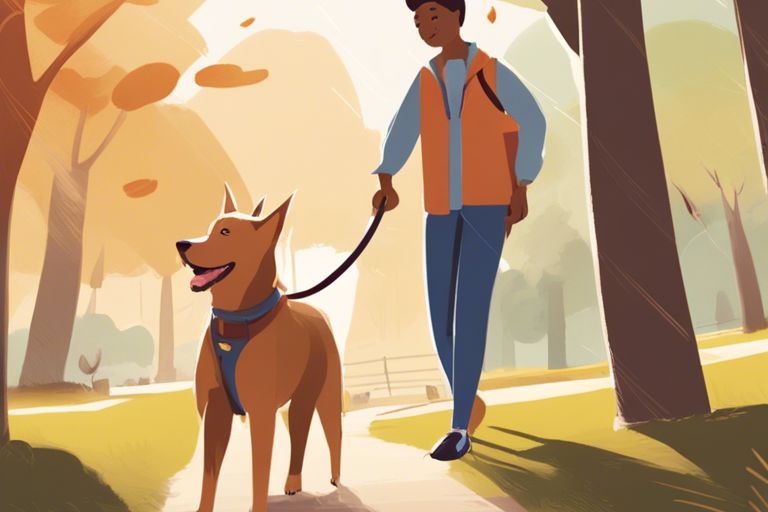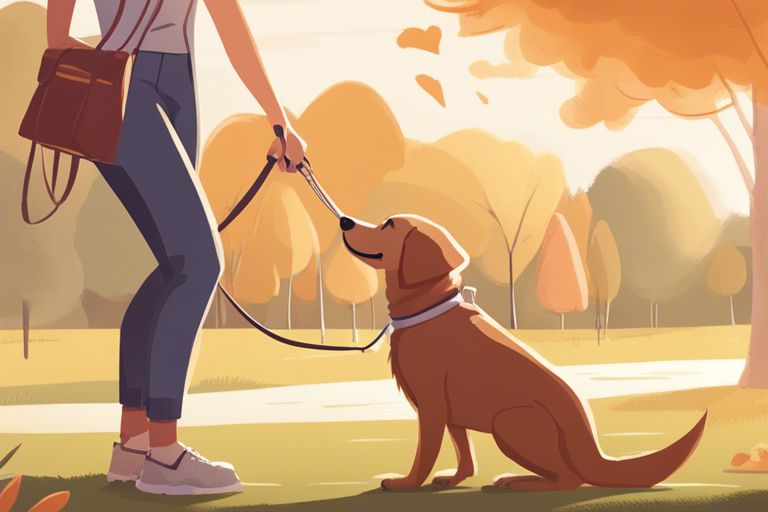If you’ve been struggling with your dog’s pulling and tugging on walks, you’re not alone. Teaching your furry friend to walk nicely on a leash is a crucial skill that every dog owner should master. Not only does it ensure a pleasant and enjoyable walk for you and your pup, but it also prevents potential injuries from unpredictable behaviors. The key to success lies in consistent training and patience. In this blog post, you’ll learn effective techniques and tips to help you and your dog enjoy stress-free leash walks.
Preparing for Training
The key to successfully teaching your dog to walk nicely on a leash is proper preparation. Taking the time to set the stage for training will make the process smoother and more effective in the long run. Here are some important steps you should take before you begin training your dog to walk nicely on a leash.
Choosing the Right Leash and Collar
When it comes to selecting the right leash and collar for training your dog to walk nicely on a leash, it’s important to consider the specific needs of your dog. For most dogs, a standard 6-foot leash and a flat collar or harness will work just fine. However, if you have a particularly strong or determined puller, you may want to consider a front-clip harness or head halter to give you more control. Whatever you choose, make sure that the equipment fits properly and is comfortable for your dog to wear. Avoid using retractable leashes as they can reinforce pulling behavior and potentially lead to injury.
Creating a Positive Training Environment
Creating a positive training environment is essential for teaching your dog to walk nicely on a leash. Find a quiet, low-distraction area to start your training sessions. It’s important to set your dog up for success by choosing a location where they can focus on learning without being overwhelmed by outside stimuli. Additionally, make sure you have high-value treats or rewards on hand to motivate and reinforce your dog’s good behavior during training. Remember to always use positive reinforcement techniques, such as praise and treats, to encourage the behavior you want to see. This will help your dog to associate walking nicely on a leash with positive experiences and will make them more likely to repeat the behavior in the future.
By choosing the right equipment and creating a positive training environment, you can set yourself and your dog up for success when teaching them to walk nicely on a leash. Remember to stay consistent and patient as you work with your dog, and you will be rewarded with enjoyable walks together.
Basic Leash Training Techniques
Now that you understand the importance of teaching your dog to walk nicely on a leash, it’s time to delve into the basic training techniques. This chapter will equip you with the knowledge and skills necessary to train your dog to walk calmly and confidently by your side.
Introducing the Leash and Collar
When it comes to introducing the leash and collar to your dog, it’s important to take a gradual and positive approach. Start by allowing your dog to sniff and investigate the leash and collar while offering praise and rewards for their curiosity. Once your dog seems comfortable with the leash and collar, gently fasten them on and allow your dog to move around freely indoors. This will help your dog to associate the leash and collar with positive experiences. Be sure to choose a lightweight, comfortable collar that fits your dog properly to avoid any discomfort or potential harm.
Encouraging Focus and Attention
An essential aspect of leash training is encouraging your dog to focus and pay attention to you while walking. To achieve this, start by practicing simple commands such as “sit” and “stay” in a distraction-free environment. Once your dog is responding well to these commands, gradually introduce the leash and practice walking short distances together. Use treats and verbal praise to reward your dog for maintaining focus and attention on you. Consistency and patience are key when it comes to reinforcing these behaviors, so be sure to practice regularly and remain positive throughout the process.

Advanced Leash Walking Skills
To further improve your dog’s leash walking skills, you can move on to more advanced techniques. These skills will help you have better control over your dog and make your walks even more enjoyable.
-
Heel Command
To teach your dog the heel command, you need to reinforce walking next to you without pulling. Use treats and positive reinforcement to encourage your dog to stay by your side. Gradually increase the duration of walking in the heel position. -
Change of Pace
Teach your dog to match your pace when walking. Practice changing your speed and have your dog adjust accordingly. This will help in maintaining control and focus during walks. -
Walking With Distractions
Gradually expose your dog to different distractions while walking, such as other dogs, people, or noises. Teach your dog to stay focused on you regardless of the surrounding distractions.
Handling Distractions and Impulses
To further improve your dog’s leash walking skills, it’s important to practice handling distractions and impulses. When your dog encounters a distraction, such as another dog or a squirrel, your dog may be tempted to pull or lunge. By teaching your dog to remain focused on you, despite distractions, you are reinforcing positive leash walking behavior. Using positive reinforcement and redirecting your dog’s attention back to you will help in managing these impulses and distractions. Remember to stay patient and consistent in your training approach.
Practicing in Different Environments
Practicing leash walking skills in different environments will help your dog generalize their training. This means that your dog will learn to walk nicely on a leash in various settings, such as urban streets, parks, and quiet neighborhoods. It’s crucial to expose your dog to different environments to ensure they can maintain good leash manners regardless of the surroundings. By gradually introducing new environments and reinforcing positive behavior, your dog will become more adaptable and obedient on walks.
Troubleshooting Common Issues
Keep in mind that teaching your dog to walk nicely on a leash takes time and patience. It’s normal to encounter some common issues along the way, but with consistent training and reinforcement, you can address these challenges effectively.
Pulling on the Leash
If your dog constantly pulls on the leash during walks, it’s important to address this behavior early on. When your dog pulls, do not continue walking forward, as this reinforces the behavior. Instead, stop walking and wait for your dog to come back to your side before resuming the walk. You can also use positive reinforcement by rewarding your dog with treats or verbal praise when they walk by your side without pulling. Consistency is key, so be patient and persistent in your training efforts.
Reactive or Aggressive Behavior
If your dog exhibits reactive or aggressive behavior while on the leash, it’s essential to address this issue with caution. Do not punish your dog for displaying these behaviors, as it can exacerbate the problem. Instead, focus on desensitization and counter-conditioning techniques to help your dog feel more comfortable and less threatened during walks. Seek professional help if your dog’s reactive or aggressive behavior poses a danger to you, your dog, or others.
Teaching Your Dog to Walk Nicely on a Leash
From above, teaching your dog to walk nicely on a leash is a process that requires patience and consistency. By using positive reinforcement, practicing loose leash walking, and addressing any behavioral issues, you can help your dog learn to walk beside you without pulling. Remember to remain calm and assertive, and to always praise and reward your dog for good behavior. With time and practice, you and your furry friend can enjoy pleasant walks together.














